Past Colloquia
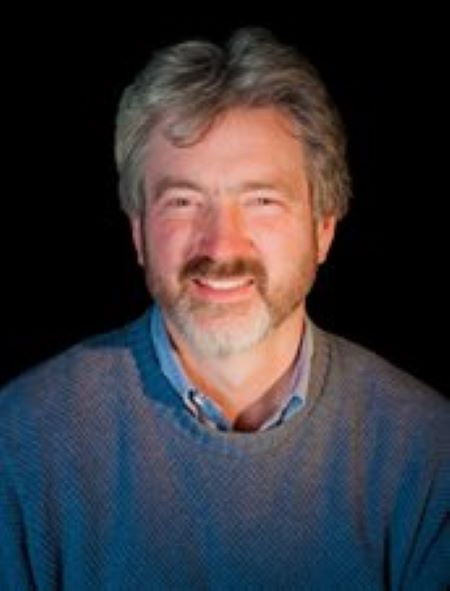
Dr. Tim Gessert
Gessert Consulting, LLC
DATE/TIME: Friday April 8th, 2022 | 4:00pm
Location: Classroom Building 214
Short Biography:
Timothy Gessert is the Principal Scientist and Managing Member of Gessert Consulting,
LLC (Conifer, Colorado, USA), and a former/retired Principal Scientist at the National
Renewable Energy Laboratory. Tim received undergraduate degrees in Physics and Mathematics
from University of Wisconsin River Falls in 1982, M.Sc. in Physics from Colorado School
of Mines in 1984, and Ph.D. in Applied Physics from University of Wales - College
of Cardiff in 1996. His 40+ years of research have included synthesis and characterization
for photovoltaic and other materials including GaAs, InP, Si, CuInGaSe2, CdTe, and
transparent conducting oxides (TCOs). Major interests have also
included training and mentoring of undergraduate and graduate students, and is presently
or
previously an adjunct faculty member at Colorado School of Mines, Colorado State University,
University of Toledo, Vanderbilt University, and University of Illinois at Chicago.
Tim has
collaboratively published over 230 papers, 1 book, 6 book chapters, and has over 30
awarded or
pending U.S. patents. He is active in developing and teaching both in-person and virtual
short
courses and in developing related web content for institutions and societies involved
in Vacuum
Technology, Contamination Control, Transparent Conducting Oxides, and Thin-Film
Photovoltaics. Tim has been a long-term member of the American Vacuum Society (AVS,
serving
currently as President of the Society in 2022), the Society of Vacuum Coaters (SVC),
the Materials
Research Society (MRS), the Institute of Electrical and Electronic Engineers (IEEE),
and the
Institute of Physics (IOP). He has served on numerous Conference Committees and Editorial
Boards, and is presently the Editor-in-Chief of the technical journal Thin Solid Films.
A Brief (but Amazing!) History of how Photovoltaics Became the Dominant New Electric Power Source in the US
World use of photovoltaic (PV) solar electricity has been increasing at an average annual exponential growth rate >35% since about 2000. Not surprisingly, during this same time, the percentage of US-consumed energy (~100 Quadrillion BTUs total) derived from PV has increased from ~0.001% in 2004, to ~1% at the end of 2018. Indeed, if these trends continue, PV could produce ~25% of all energy consumed in the US by as early as 2030. Combining this with the rapidly decreasing energy costs for large grid-tied PV systems (presently <2.5¢/kWh for long-term power purchase agreements) largely explains why PV-derived energy is – even now – a main source of new US and world electric energy. Although the majority of this PV-derived energy is presently generated by crystallinebased Si module technologies, because of combined efficiency, production, cost, and other advantages, an ever-increasing amount of PV energy is being produced from polycrystalline thin-film (TF) materials. These TF PV technologies owe much of their rapidly advancing success to improved understanding in related materials synthesis, while applying these advancements to industry, in turn, has relied on design innovations of related vacuum-process equipment. This talk will briefly overview the present state of TF PV technologies, taking into consideration both the present dominance of crystalline Si PV, and evolving trends in TF PV. Several examples where keen understanding of vacuum processes in laboratory-scale devices has fostered successful utilization of advanced vacuum technology in the commercial TF PV industry will be presented. The talk will also suggest some areas where further advancements in vacuum-process and equipment innovation could yield potentially even lower-cost TF PV technologies.
______________________________________________________________________________________
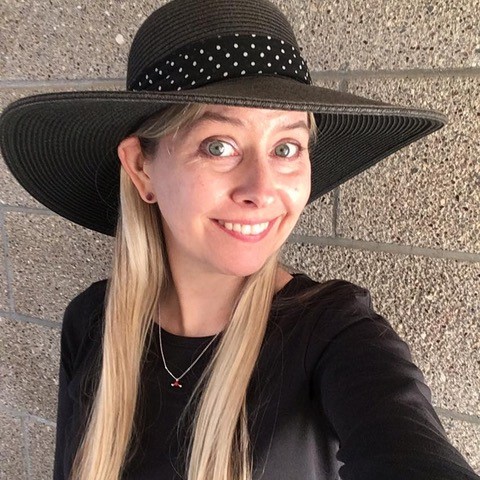
Dr. Rachel Martin
University of California, Irvine
DATE/TIME: Friday March 18th, 2022 | 4pm
Location: Agriculture C Building Room 1030
Short Biography:
Rachel Martin is a biophysical chemist. She earned her B.S. at Arizona State University and Ph.D. at Yale University, both in chemistry, and did her postdoctoral work at UC Berkeley. She is a fellow of the American Association for the Advancement of Science and the International Society of Magnetic Resonance. Her research focus is methods development for molecular-level understanding of protein stability. She uses a variety of biophysical techniques to explore how the crystallin proteins of the eye lens maintain their solubility, and hence the transparency of the lens, for decades. She and her group are currently engaged in using 3D printing and automation to make NMR instrumentation development more accessible to a wider range of researchers.
Solubility, stability, and transparency in the refractive proteins of the vertebrate eye lens
The crystallin proteins of the vertebrate eye lens are highly soluble, remaining in solution at a concentration upwards of 400 mg/mL despite a lack of protein turnover and frequent exposure to UV light. These proteins, which are strongly conserved in all vertebrates, are mostly expressed during early development and must remain in solution for a lifetime. Extremely soluble proteins are the flip side of the protein aggregation problem, providing useful case studies for probing the molecular basis of solubility. Understanding how crystallins stay in solution, even at high concentrations and in the face of photodamage and chemical modification provides insight into how to prevent protein deposition diseases. An equally fascinating question is how these proteins interact with light to provide the refractive power of the lens. I will present data from a range of biophysical techniques, including NMR spectroscopy, X-ray crystallography, mass spectrometry, and light scattering to illustrate how crystallins resist post-translational modification due to aging, UV light damage, and even gamma irradiation.
________________________________________________________________________________________
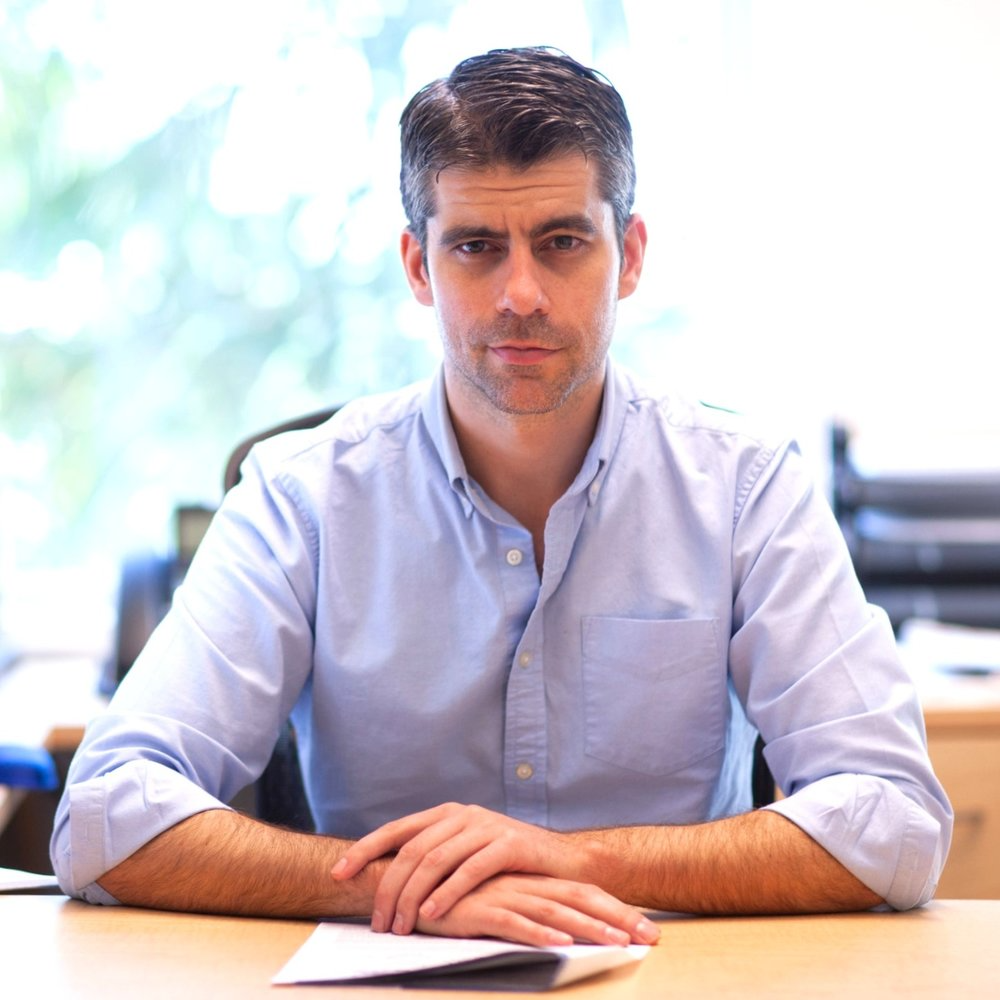
Dr. Chris Parker
The Scripps Research Institute
DATE/TIME: Friday 3/11/22 4PM
Location: Zoom Link
Short Biography:
Chris received his B.S. in Chemistry in 2007 from Case Western Reserve in Ohio, where he was an undergraduate researcher in Prof. Phil Garner’s lab. He then moved to Yale where he worked with David Spiegel on small molecule-driven approaches to antibody recruitment. After receiving his Ph.D. in Chemistry in 2013, Chris moved to Benjamin Cravatt’s lab at the Scripps Research Institute as an American Cancer Society postdoctoral fellow. He then started his independent position in 2018 at the Scripps Research Institute; where he was promoted to the rank of Associate Professor in 2022. Broadly speaking, the Parker Lab seeks to develop chemistry-enabled strategies to investigate human biology and disease pathology.
Proteome-wide Ligand and Target Discovery in Cells
Advances in DNA sequencing and editing technologies have revolutionized our understanding of the molecular basis of many human diseases. However, many disease-relevant genes encode proteins that are poorly characterized and/or are considered “undruggable”, hindering our understanding of disease mechanisms and translating this knowledge into new therapies. Chemical probes offer a valuable way to directly interrogate the function and disease-relevance of proteins and can also serve as valuable leads for drug development, yet most proteins in the human proteome lack small-molecule ligands that can serve as probes. More generally, the boundaries, if any, on the ligandability, and therefore potential druggability, across native proteomes remains poorly understood. In this seminar, I will describe our lab’s efforts to develop powerful chemical proteomic strategies to broadly map ligandable proteins directly in cells, and how this information can be advanced into useful chemical probes to investigate protein function.
______________________________________________________________________________________
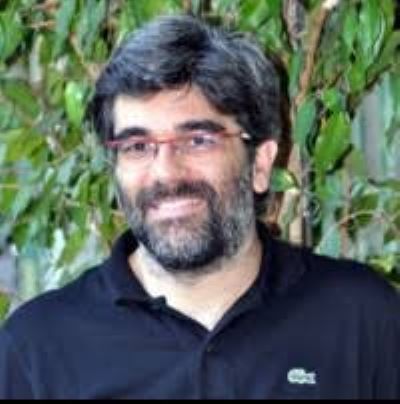
Dr. Riccardo Rurali
Institut de Ciència de Materials de Barcelona (ICMAB-CSIC)
DATE/TIME: Friday 2/25/22 4PM
Location: Classroom Building Room 142
Short Biography:
Riccardo Rurali graduated in Electrical Engineering at the Politecnico di Milano (Italy) and received his PhD in Materials Science in 2003 from the Universitat Autònoma de Barcelona. He is a staff scientist since 2010 at the Materials Science Institute of Barcelona (ICMAB-CSIC). He has carried out extensive work in the theoretical modeling of the structural and electronic properties of semiconducting nanowires. More recently, his research interests shifted towards nanoscale thermal transport and the design of thermal circuits elements. He has also been active in the modeling of the thermoelectric properties of different kinds of nanostructures and in other energy related research topic, such as nonlinear vibrational energy harvesting, mass transport, and resistive switching. His scientific activity is equally shared between the development of his own research line and the theoretical support provided to leading experimental groups.
Manipulating Phonons at the Nanoscale: From Materials Design to Phononic Devices
The development of phononics —the discipline that investigates phonon transport and aims at engineering devices with the same functionalities as electronic or photonic ones — has been hindered by the inherently challenging nature of phonon manipulation. An effective and flexible control of phonon propagation would require expanding the phonon toolbox to include all the elemental building blocks that make it possible to switch and modulate signals. In this talk I will describe two complementary approaches to this problem. At first, I will discuss the potential of crystal phase engineering, an emerging field in nanoscience that consists of the design of materials with tailor-made properties by growing and juxtaposing ad hoc crystal phases of the same material. Next, I will discuss the possibility of a fully electromagnetic control of the phonon flux, which can be continuously modulated by an externally applied electric field in polar materials or magnetic fields in magnetic materials, revealing the mechanisms by which experimentally accessible fields can be used to tune the thermal conductivity, even at room temperature. These findings open the way to a fully-electric control of phonon transport that can be exploited for the design of thermal transistors and pave the way to signal processing with phonons.
_______________________________________________________________________________________
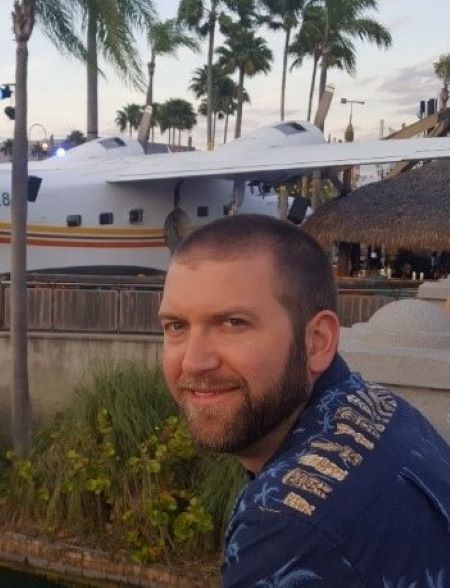
Dr. Brian Leonard
DATE/TIME: Friday 11/5/21 4PM MDT
Location: CR 222
Short Biography:
Brian earned his B.S. at the University of Nebraska Kearney in 2003. He then went to Texas A&M University where he earned a PhD in 2008 working for Professor Raymond Schaak synthesizing intermetallic nanomaterials. He then joined the lab of Professor Francis DiSalvo at Cornell University investigating the electrocatalytic activity of platinum based intermetallic compounds for fuel cell reactions. Brian started his independent career at the University of Wyoming in 2010 leading a research group studying the low temperature synthesis of metal carbide compounds with applications focusing on water splitting catalysis. In recent years, he has developed new several projects including quantum dots and 2D materials. He serves on the editorial board for the journal Materials Research Express (MRX) and is a councilor for the American Chemical Society.
Synthesis and Intercalation Chemistry of Two-Dimensional (2D) Materials
Two-dimensional materials are currently being investigated for their unique properties which can undergo dramatic changes as the they approach atomic thicknesses. The most studied 2D materials are elements like graphene and germanene or binary compounds like transition metal dichalcogenides (TMDs). This presentation will focus on two of our current projects which focus on synthesizing and the intercalation of different metals and molecules into these layered materials. The first project focuses on a novel phase of WS2 with a monoclinic structure which is being studied as a topological superconductor. This phase can only be produced after intercalation of the hexagonal phase with potassium and subsequent removal of the K+ ions. The second project focuses on more complex metal oxyhalides which form robust two-dimensional metal oxide sheets separated by halide van der Waals regions. These materials have a variety of physical, electronic, and magnetic properties that can be easily tuned through changes in the halide (Cl, Br, or I) or using simple intercalation chemistry where ions (Li, Na, K, Rb, and Cs) are inserted between the metal oxide layers. The intercalation reactions give rise to dramatic changes in the optical and electronic properties of these compounds which were investigated by resistivity measurements, absorption and Raman spectroscopy, X-ray diffraction (XRD), and electron microscopy (SEM &TEM). By studying the underlying intercalation reactions, we can improve our knowledge of the reaction kinetics and the limiting factors in these reactions which will lead to novel materials with a broader range of intercalation species.
_____________________________________________________________________________________
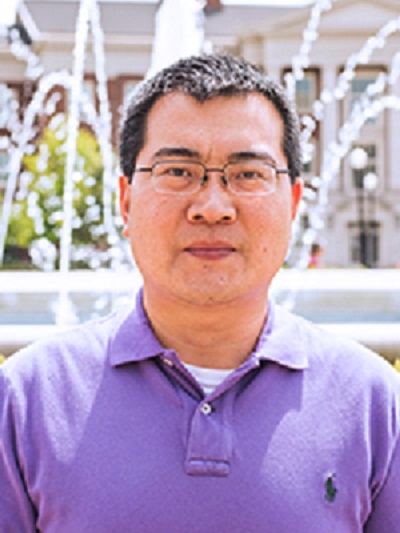
Dr. Shanlin Pan
Department of Chemistry and Biochemistry, The University of Alabama
DATE/TIME: Friday, Oct. 29 2021 4PM MDT
Location: Classroom Building 214
Short Biography:
Dr. Shanlin Pan is is a chemistry professor at The University of Alabama. Professor Pan earned his Ph.D. (2006) under the supervision of Professor Lewis J. Rothberg at the University of Rochester, NY. Before embarking on his independent academic career at UA, he was an ACS Irving S. Sigal postdoctoral fellow with Professor Allen J. Bard at the University of Texas at Austin, TX. He started his independent career at UA in 2008. Dr. Pan’s research efforts primarily focus on developing multicomponent functional materials for efficient light energy absorption, charge separation, charge transport, and solar fuel conversion. His research also involves the development of a single molecule and single nanoparticle spectroelectrochemistry technique that combines methods of electrochemistry and high-resolution optical imaging for electrochemical studies with improved transient, spectral, and spatial resolution. Dr. Pan was recently appointed to be a Marilyn Williams Elmore and John Durr Elmore Endowed Professor. Dr. Pan is a recipient of The College of Arts and Sciences Leadership Board Faculty Fellow (2017-2019) and the UA President’s 2018 Faculty Research Award. Dr. Pan teaches undergraduate courses, including Quantitative Analysis and General Chemistry, and graduates Electrochemistry Principles and Methods. He serves on the editorial board of Frontiers in Science, Technology, Engineering, and Mathematics, Journal of Analysis and Testing and The Journal of Chinese Chemistry Letter. Dr. Pan also is a co-chair of the Research & Service committee of the Faculty Senate.
Advanced Scanning Electrochemical and Spectroelectrochemical Methods for Analyzing Surfaces of Catalytic Electrode Materials
Ultrasensitive electrochemical and optical imaging approaches are critical for realizing local chemical information particularly for systems such as sustainable energy harvesting and conversion. We are interested in developing electrochemical and spectroelectrochemical techniques for ultrasensitive quantitative analysis of catalytic surfaces and localized redox activities with improved spatial and spectral and temporal resolutions. Examples of scanning electrochemical microscopy based on ultramicroelectrodes, nanoelectrodes, and optical fiber electrodes, and optical imaging techniques will be discussed in this seminar. These techniques help understand fundamental aspects of an electrochemical process, such as local heterogeneities in catalytic reaction and stability issues of functional low-dimension metallic and semiconductor electrode materials with synergistic functions for sunlight harvesting, conversion, and storage into chemical fuels. These studies will provide insights into developing unique catalytic and photonic properties of nanostructured electrode materials for the efficiency and selectivity of the solar-to-fuel conversion.
________________________________________________________________________________________
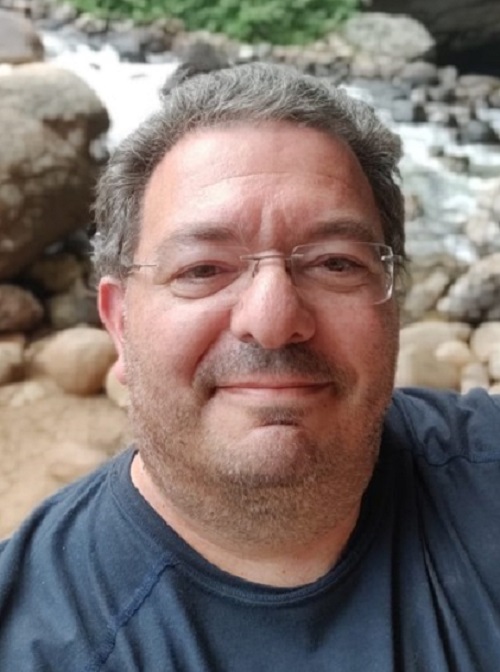
Dr. Chris Thomas
3M Film, Materials, and Engineering Division
Date/Time: Friday October 22, 2021 - 4PM MDT
Location: Classroom Building Room 214
Short Biography:
Chris graduated from the University of Wyoming with a BS in Chemistry (ACS, with honors) in 1990, and PhD in analytical chemistry from the University of South Carolina in 1995. He joined the 3M Corporate Research Labs in 1995, specializing in atomic spectroscopy and elemental analysis applied widely across 3M R&D and manufacturing. Chris spent 2 years in a Six Sigma Black Belt role, working on special projects in Corporate Research. He re-entered from this role as quality manager in the 3M Decatur (AL) Film plant during a time of unprecedented product growth. He transition to manufacturing technology manager, then decided to return to the technical side, as a scientist working in the plant, in the material characterization lab he started. Chris has worked on critical manufacturing problems from across 3M, and started a corporate-wide initiative to deploy advanced material characterization and problem solving capabilities in factories across 3M globally that has resulted in significant savings and new product acceleration. Chris is currently Senior Division Scientist in 3M’s Film, Materials, and Engineering Division.
Manufacturing Forensics at 3M: The Confluence of Analytical Chemistry, Material Science, and Process Technology
Everyone loves a “who done it” forensics story, ripe with twists and turns, drama, and surprise discoveries. Chris will describe the application of this same line methodology applied to manufacturing at 3M—Manufacturing Forensics. Making complex and unique products often comes with unique materials and processing challenges, many of which cannot be solved with engineering alone. Analytical chemistry is foundational to finding the root cause of many of these problems. Chris will show multiple examples where hard core analytical chemistry was developed and applied to unique material, product, and processing challenges, many with twists, turns, and drama to hopefully keep you on the edge of your seat!
______________________________________________________________________________________
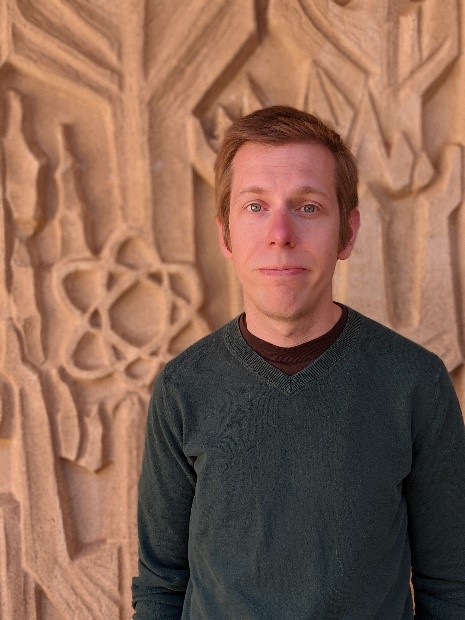
Dr. Caleb Hill
DATE/TIME: Friday Oct. 15 4PM MDT
Location: Classroom Building Room 214
Short Biography:
Caleb earned a B.S. in Chemistry from Jacksonville State University in 2009 and a Ph.D. in Physical Chemistry from The University of Alabama in 2014. During his Ph.D. studies, he worked in the group of Shanlin Pan, developing optical methods for probing electrochemical reactions at individual nanostructures. He then joined the group of Allen J. Bard at the University of Texas as a postdoctoral researcher, where he studied the effects of electron tunneling in passivated ultramicroelectrode systems and electrochemical methods for probing individual nanoparticles. In 2016, he began his independent career in the Department of Chemistry at the University of Wyoming, leading a research group focused on the development of analytical methods for probing chemical processes at single reactive entities and the application of these methods to gain insights into systems for energy conversion/storage, catalysis, and sensing. In 2017, he also co-founded Wyonics LLC, a start-up company whose mission is to develop sustainable chemical solutions to important economic and environmental challenges in the state of Wyoming. He lives in Laramie with his wife, Kristin, and two boys, Ronin and Felix.
Adventures in Nanoscale Electrochemistry
Solid-electrolyte interfaces play a central role in electrochemical systems for energy conversion/storage, catalysis, and sensing. Understanding the structure-function relationships which control the performance of these systems is a broad goal of the electrochemistry community, but it is challenging to establish these relationships experimentally. Electrochemical interfaces are fundamentally complex, exhibiting site-to-site variations in reactivity which make the interpretation of data produced using traditional, “bulk” analytical techniques problematic. A key focus of the Hill Laboratory at UW has been the development of “single entity” analytical techniques which can probe discrete active sites within these complex interfaces, generating more detailed insights to help guide the design of improved practical systems. These techniques employ electrolyte-filled pipets to locally address a surface of interest, effectively providing spatial control over any interfacial chemical process with resolutions down to ~10 nm. Here, I will give an overview of my lab’s work which spans studies of electrocatalysis at individual metal nanocrystals, the synthesis and manipulation of individual nanoparticles at electrochemical interfaces, and carrier transport within well-defined, μm-scale crystals of 2D semiconducting materials.
________________________________________________________________________________________
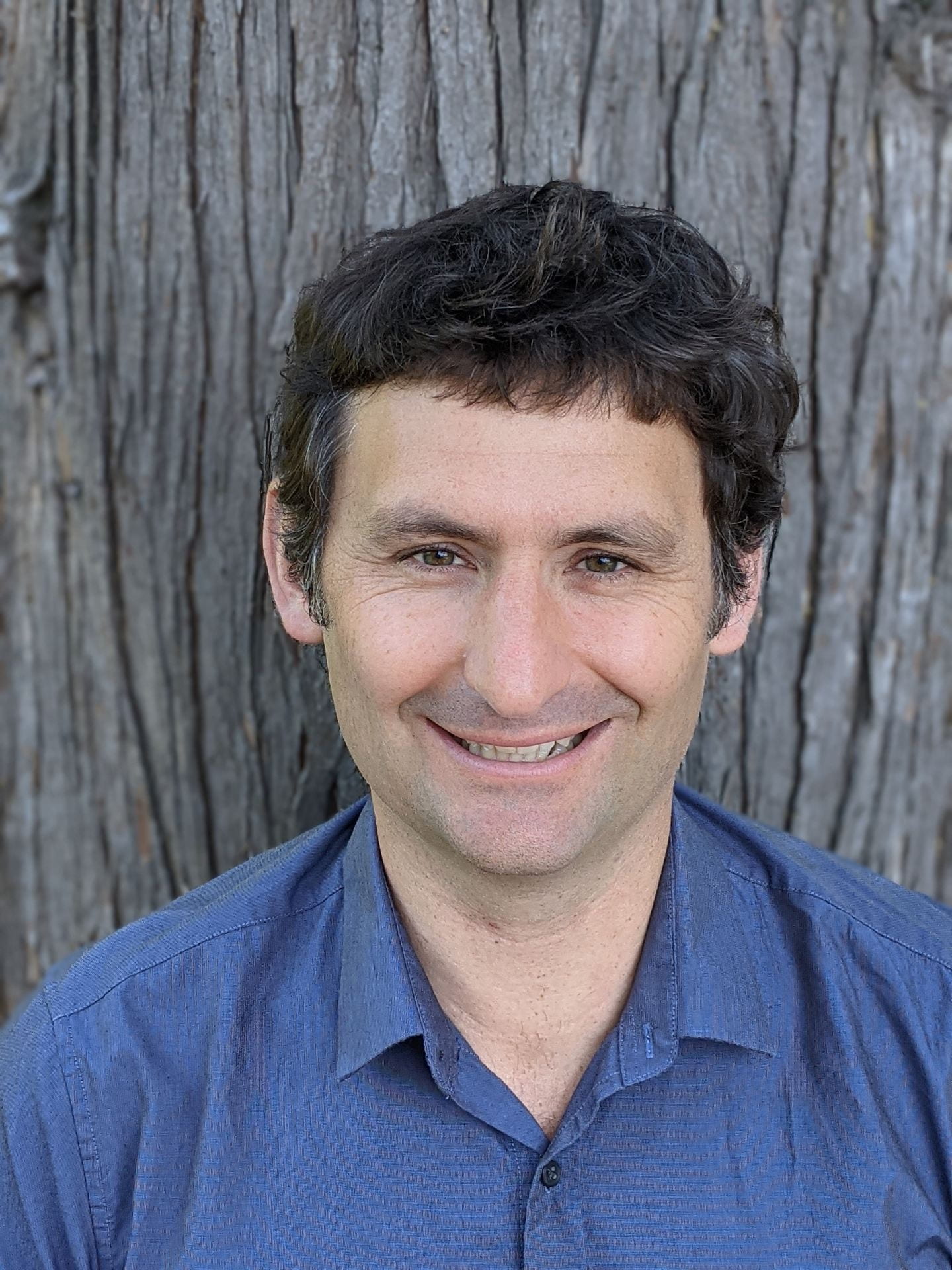
28th Annual Hach Lecture
Dr. Shannon Boettcher
DATE/TIME: Friday Sept. 17th 4PM MDT
Location: Classroom Building Room 222
Short Biography:
Boettcher is a Professor in the Department of Chemistry and Biochemistry at the University of Oregon. His research is at the intersection of materials science and electrochemistry, with a focus on fundamental aspects of energy conversion and storage. He has been named a DuPont Young Professor, a Cottrell Scholar, a Sloan Fellow, and a Camille-Dreyfus Teacher-Scholar. He is a 2019 and 2020 ISI highly cited researcher (top 0.1% over past decade) and in 2021 was a Blavatnik National Award Finalist. In 2019 he founded the Oregon Center for Electrochemistry and the nation’s first graduate program in Electrochemical Technology.
Advanced Bipolar Membranes: Design Principles and Applications in Electrochemical Technology
Bipolar membranes (BPMs) consist of an anion-selective ionomer membrane laminated with a cation-selective ionomer membrane. They have applications across electrochemical technology. BPMs generate pH gradients under an applied bias by driving water dissociation (WD) into protons and hydroxide at the interface between the two different ionomers. In BPM water electrolysis, this feature enables devices that operate proton reduction in locally acidic conditions where the kinetics are fast and water oxidation in locally basic conditions where efficient earth-abundant catalysts are stable. In electrodialysis, BPMs can be used to economically generate acid and base from brine on demand, which is critical for many industrial processes including water treatment. Alkaline solutions generated by BPM electrodialysis can further be used in CO2 capture schemes from the air or ocean. As the predominant H+/OH- ion flow is out from the center of the BPM, their use in CO2 electrolysis devices mitigates unwanted cross-over of reactants or products.
I will present progress in designing advanced BPMs with a focus on understanding and optimizing the WD catalyst integrated between the anion- and cation-selective layers. We systematically studied ~40 metal and metal oxide nanoparticle interlayers and discovered that the local pH is a critical, but previously unrecognized, variable affecting WD kinetics. Combining WD catalysts efficient in acidic and basic conditions into catalyst bilayers nearly eliminates the WD overpotential in BPM water electrolyzers operating at 20 mA cm-2 and enables BPM operation at 0.5 A cm-2 with a total applied electrolysis potential of ~ 2 V. By thinning the cation-selective ionomer layer, water transport to the BPM junction is improved, leading to current densities > 3 A cm-2. These values are substantial improvements over the state of the art and have the potential to lower operating costs (due to higher BPM voltage efficiency) and capital cost (due to higher current density) of the applications introduced above. Ongoing efforts to provide a detailed chemical and physical understanding of the water-dissociating junction in BPMs will be outlined.
________________________________________________________________________________________
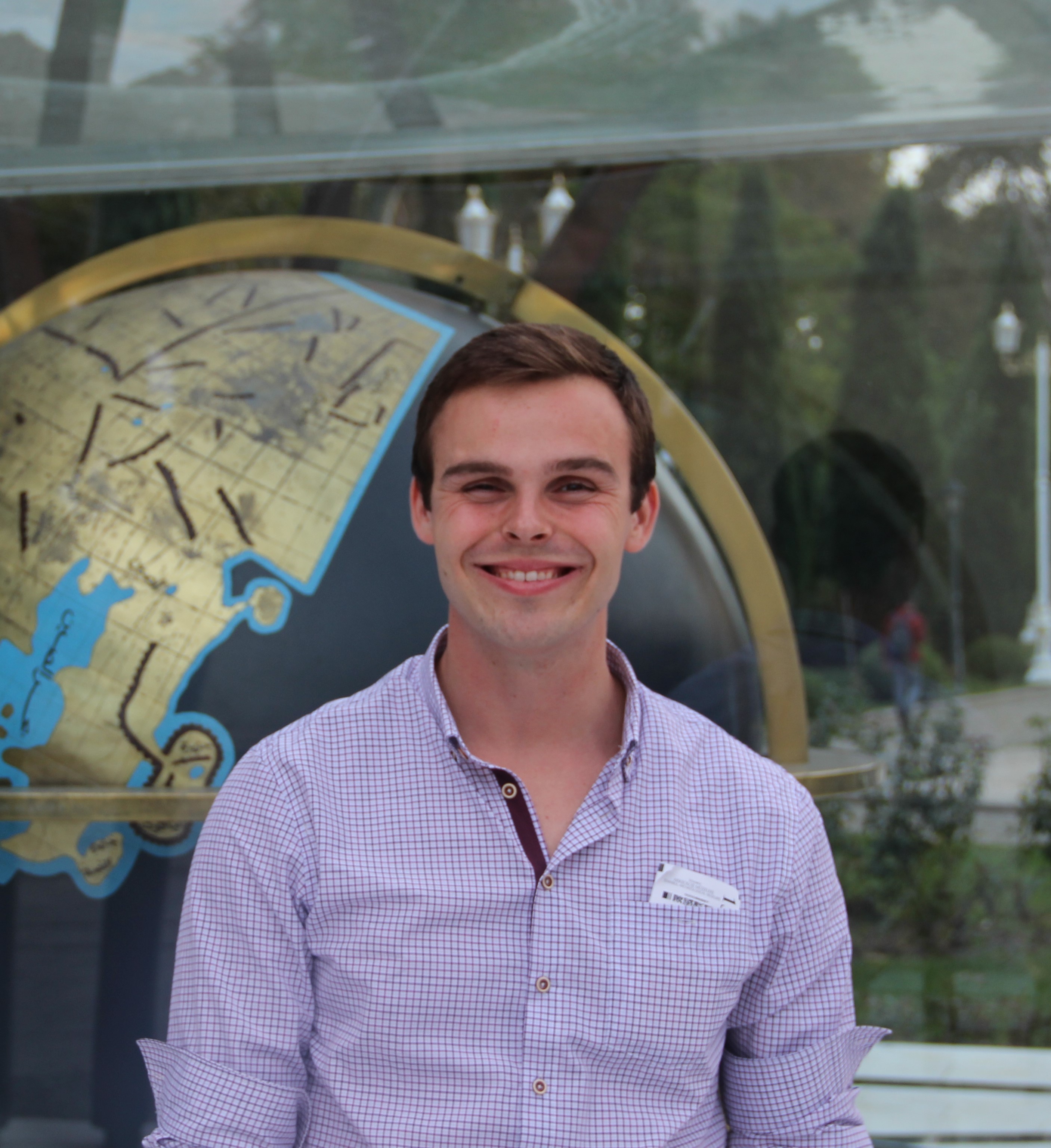
Dr. Jeffrey E. Dick
DATE/TIME: Friday 9/3/21; 4PM MDT
Location: Classroom Building 222
Short Biography:
Prof. Jeffrey E. Dick was awarded a Bachelor of Science from Ball State University in Muncie, Indiana. He then pursued his graduate career with Allen J. Bard at the University of Texas at Austin, where he was awarded a Ph.D in August 2017 with the thesis ‘Studies in the Electrochemistry of Single Atoms, Molecules, and Nanoparticles.’ Prof. Dick began his independent career in July 2018 at the University of North Carolina at Chapel Hill, where his group focuses on developing measurement science methods to study chemical reactivity in very small volumes.
Droplet Like It’s Hot: How Chemistry Changes in Tiny Volumes
How is chemical reactivity different in sub-microliter volumes compared to bulk, continuous phases? For centuries, chemists have assumed that chemical reactivity is similar in the ocean as it is in a lysosome despite volume differences spanning nearly 40 orders of magnitude. While measurement science techniques exist to probe reactivity in small volumes, they suffer in their ability to characterize femtoliter (10-15 L) or smaller nanodroplets, one at a time. This talk will detail our group’s efforts in developing nanoelectrochemical methods to study reactivity in water micro- and nanodroplets. We will demonstrate the heterogeneous growth of a new phase does not depend on the water nanodroplet size, but the heterogeneous nucleation kinetics can be enhanced in such complex environments due to localized surface concentration supersaturation. Due to rapid mass transfer within nanodroplets, we will demonstrate the possibility of electrosynthesizing high entropy alloy nanoparticles at room temperature. Finally, we will demonstrate that homogeneous enzymatic reaction rates are accelerated in water nanodroplets and that the rate is inversely proportional to the nanodroplet size. The talk will end with a future outlook on the role such experiments can play in understanding how nature takes advantage of nanoconfinement in the genesis and propagation of life.
_______________________________________________________________________________________
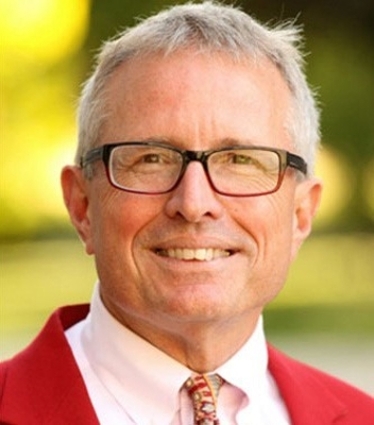
Dr. Robin D. Rogers
Date/Time: 01/29/21 4PM MST
Location: Zoom (link to meeting)
Short Biography:
B.S., 1978, Ph.D., 1982, The University of Alabama; Assistant, Associate, Full, Presidential Research Professor, 1982-1996, Northern Illinois University; Faculty Appointee, 1991-1998, Argonne National Laboratory; Professor of Chemistry, Distinguished Research Professor, Robert Ramsay Chair of Chemistry, 1996-2014, The University of Alabama; Director, UA Center for Green Manufacturing, 1998-2014, The University of Alabama; Chair of Green Chemistry, 2007-2009, The Queen’s University of Belfast, Belfast, NI (UK); Director, QUILL Research Centre, 2007-2009, The Queen’s University of Belfast; Honorary Professor, 2009-, Institute of Process Engineering Chinese Academy of Sciences, Beijing, China; Canada Excellence Research Chair in Green Chemistry and Green Chemicals, 2015-2017, McGill University; Research Professor, 2017-, The University of Alabama; President/Owner/Founder, 2004-, 525 Solutions, Inc.
Roadmap to Commercialization of Ionic Liquid Extraction Technologies Including Roadblocks, Detours, and Areas Under Construction
There will be common challenges to scaling up any ionic liquids separations technologies which require very large volumes of ionic liquid. Some of these challenges will be illustrated in this presentation which chronicles my personal motivation and journey into the extraction of chitin from shrimp shell from discovery to current commercialization efforts. The road being taken from discovery in an academic laboratory, through attempts to navigate the scaling up to commercial scale using the vehicle of a faculty startup company is rewarding, but fraught with roadblocks, detours, and unexpected challenges. The differences in ‘technically feasible’ and ‘commercially viable’ are not always evident from the beginning of the journey, however, one wonders what achievements we miss as a Society because it was assumed to not be commercially viable.

